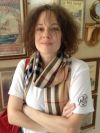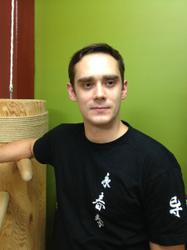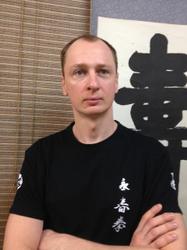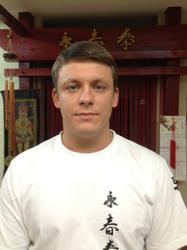Trip to Vietnam
UNCLE KUI’S WING CHUN
The world hosts a huge diversity of things - all of them striving to return to their origin.
Not so long ago, a certain Wing Chun Festival took place in Moscow, which caused quite a stir.
Representatives of various Wing Chun schools and branches demonstrated their art and then returned to their schools and settled back into their cosy comforts. Perhaps they all came away with something positive or something self-asserting. Or maybe, in contrast, they recognised something that was not needed.
The Zheleznaya Fleyta’ Wing Chun Club, which studyed the experience of many Wing Chun directions, hesitated to designate any one Wing Chun standard as the true, genuine one.
For many years now, we have been developing the Vietnamese Wing Chun direction and have formed our own system of values. We have also gained some understanding of the school started by the Master Te Kong who was introduced to us by someone we know well: Mr. Hoan Vin Zang, the Head of the Hanoi City Olympic Sports Committee.
In Moscow, which has been isolated from the main knowledge sources’ for more then twenty years now, we have been putting together a teaching ethos, bit by bit, particulary on the subject of Wing Chun school. New regulations gradually arose, which became the building blocks for the foundations of the new Wing Chun institute.
Temptations were abound however. The trip to Germany also impressed with its neat’ teaching system in the Keith Kernspecht School and amazed in equal measure with its intelligent commercial structure. Here in Moscow we knew about the successful development of H.N. An's Vietnemese school and its excellent expression of Hard Qigong, not to mention its interesting form and style. Also, a great number of video tapes were circulated depicting Masters such as A. Fong, William Chen, Steve Chan etc.
So which Wing Chun is the better one? To make the question even harder to answer, the President of the All-Russian Wushu Federation, Gleb Nikolayevich Muzrukov, has offered us the Chinese standard. Simultaneously, in China’s Foshan province, the first Wing Chun tournament was taking place. We didn't get to attend but, thanks to our close Wing Chun friends and colleagues, we obtained comprehensive information and updates about the event.
The elite Wing Chun club in Moscow’s city centre took a long time to establish. This fact, however, still does not help solve the question of which Wing Chun is better.
In the end, all stars settle in their points of space. In April of this year two Wing Chun Association instructors and I were lucky enough to travel to Saigon City, Vietnam to seek an answer to our question. We visited a Wing Chun Master who is at the very roots of the Te Kong school and his close student Uncle Kui.
 Our stay in Vietnam began with a hearty welcome by Master Chan Hou Tuan at his Saigon home. Tuan is known around the world as an artist and a collector of famous painters’ masterpieces. The artist’s studio is his world, an altar of ancestors: it is the altar of the loved and respected Master and teacher, Uncle Kui. The antique items and the surrounding modernity blend very well in his modest lifestyle and remind us of his deep respect for traditions. Fascinated and aghast by such a warm welcome, we listenened to Tuan's story about his own Wing Chun teacher. We were able to understand Tuan’s story thanks to the great efforts of Ilya Olshanetskiy, our interpreter and student of Tuan, who has been living in Saigon for over ten years. At our first meeting with the Wing Chun teachers, Ilya translated everything as well as the following passages with admirable patience, understanding and amazing attention.
Our stay in Vietnam began with a hearty welcome by Master Chan Hou Tuan at his Saigon home. Tuan is known around the world as an artist and a collector of famous painters’ masterpieces. The artist’s studio is his world, an altar of ancestors: it is the altar of the loved and respected Master and teacher, Uncle Kui. The antique items and the surrounding modernity blend very well in his modest lifestyle and remind us of his deep respect for traditions. Fascinated and aghast by such a warm welcome, we listenened to Tuan's story about his own Wing Chun teacher. We were able to understand Tuan’s story thanks to the great efforts of Ilya Olshanetskiy, our interpreter and student of Tuan, who has been living in Saigon for over ten years. At our first meeting with the Wing Chun teachers, Ilya translated everything as well as the following passages with admirable patience, understanding and amazing attention.
Bak Kui was born in 1922 and was the son of a rich man. Vietnemese society, at that time, was going through a very hard time in the history of its development. Nevertheless this boy had the opportunity to be taught to play the violin by a French teacher. His ability to play music and an exquisite outlook on life prepared him to mature and accept Wing Chun school. In 1941, when China experienced a revolution which saw the departure of the Chankaishists forces, some of them ended up in Vietnam. Among them was Te Kong, the famous Chinese Wing Chun Master.
In the beginning, Te Kong lived in a rich Chinese family who managed their affairs and provided them their security. The Master of this family had 9 wives and 25 children. He then started to teach Wing Chun to one of their sons called An Tu Kyn.
As well as other classes, An Tu Kyn learned to play the violin with his friend Bak Kui. The boys were the same age and, quite naturally, got to exchange their knowledge: Bak Kui taught his friend to play the violin whereas An Tu Kyn showed many Wing Chun exercises to Bak Kui.
After four years’ exercises it became clear that Bak Kui was very able. Soon, An Tu Kyn allowed him to ask Te Kong if he could become his student.
Bak Kui had a serious problem though: a hole in the heart. Doctors already warned his parents that, in the best case scenario, their child would live only until the age of 32. Nevertheless Te Kong took the risk and began teaching him. Some time later it became clear that classes were of great benefit to the young boy. He started feeling better and actually forgot about his illness. Bak Kui, later known as Uncle Kui, not only disproved doctors, living in great health to the ripe age of over eighty, but also became a great Master. Due to the Vietnamese war at that time and the resulting strained relationship with China, it was impossible to teach Wing Chun openly. Despite this, Bak Kui, who really wanted to maintain the Wing Chun heritage, managed to pass on his knowledge to a small number of students.
His main contribution was the organization of his priceless knowledge which he had recieved from Te Kong. This offered a jump start to the Vietnamese Wing Chun movement. Now the pearl Wing Chun branch embelishes the crown of Vietnamese martial arts. Our conversations with Chan Hou Tuan used to move smoothy to tea-drinking. Russian and Vietnamese students shared their mastership and knowledge whilst doing Chi Sao or sticking hands exercises, which can easily be called play duels’. Teachers secretly worried about their students but there was no need to! There was always a very good atmosphere at classes. Other values present were total trust and an exhiliration for action. All the students worked diligently and their efforts were worthy of praise.
 Master Tuan said that exercises had to be performed in a lighter and cohesive manner or, in contrast, with more load and more complicated, depending on the exercise. He also drew everyone’s attention to the interaction of hands and trunk’ during non-stop sweeping movements and the correct control of balance and equilibrum.
Master Tuan said that exercises had to be performed in a lighter and cohesive manner or, in contrast, with more load and more complicated, depending on the exercise. He also drew everyone’s attention to the interaction of hands and trunk’ during non-stop sweeping movements and the correct control of balance and equilibrum.
“We could not wait to try another school! But, in practice, it showed us that the principles of each school are all related and you only need to exercise more to develop sensitivity.”
Another Master called Zyong Kuok Tuan from Hanoi city soon joined the fray and, straight away, became inducted into the educational process. Zyong Kuok, who we nicknamed Tuan The Second’, devoted seven years to developing the main Wing Chun technique (108-drill movements) which is the main core of the Vietnamese Wing Chun school. He also agreed to correct some important elements which we showed him. Dima and Pasha had to re-learn the form’s execution sequence and to persevere with remembering vast numbers of nuances. During tea-drinking, Tuan The Second told us that he is a doctor-dietician and works at the Ministry of Economic Relations. He liked our enthusiasm for Wing Chun. It was due to this enthusiasm that he was prepared to travel so far and share his knowledge. He also said he was very happy to be able help us strengthen our strand of Wing Chun.
Classes run continuously with short tea breaks. The Masters said that Wing Chun’s language’ brings people closer together and helps people understand each other. They also remarked that it is hard for foreigners to study Wing Chun but that they do have some advantages, namely height and greater strength. While one of the Masters was teaching the 108 drill form to instructors, another was explaining to me the rules of movements showing variations of the 108 form. In all motions, during the form performance, the Chi Sao principle of solidity may be tracked. At the base of all movements there is a circle and a control of the centre line. The upper and lower blocks shouldn't move away on attacking by hand. The rotation of the body controls them and redirects the force. A Wooden Dummy (Mook Yan Joang) is needed for putting these principles into practice.
More and more, these Masters engaged themselves in the educational process. Students selflessly put themselves under the experienced wings’ of the Master. The whole atmosphere of classes, which were surrounded by antique furniture, slowly began to resemble a place of mystery and a magic act, rather then sport.
Chank Hou Tuan was exploring the content of the 108 drills, to put it preciesly. Taking on his role as a teacher, he passed various forms of pressure to the hands. A student takes this pressure off or redirects it without breaking the form of the skill. Tuan The Second showed further development of this form especially in his work with the four partners, the cardinal directions of the world, turns and transfers, variations of fast kicks (when the pace of combat increases). Topics of self-defence in the Wing Chun school were touched upon. Incidental things of common usage were listed: rolled magazine, eating sticks, a tea plate. All the time the same principle of the centre line control applies. Tuan The Second complemented this with his good humour and having taken a cup, as if he was defending himself, promptly turned it around with the handle facing his opponent’. The most important element is the psychology and combat readiness.
Soon, a Mr. Toan (relative of Uncle Kui) arrived from Hanoi. Toan is a mysterious person with an aura of the unspoken. He speaks in parables and graphic phrases, as all teachers should. In his profession, the surgeon appears only after the operation!
Tuan the Third, nephew of the Uncle Kui, is a guest of honour.
Gradually the conversations moved towards plans for the joint development of Wing Chun in Russia. Of particular importance was the question of a possible visit to Moscow by Master Zyiong Kuok Tuan in June-July 2001. He would be joined by Russian instructors practicing Wing Chun in Vietnam. They are Andrey Kuznetsov and Ilya Olshanetskiy, who are students of Tuan the Second, whose help and support are vital at the Moscow seminar. In particular, the knowledge of language: it is important not to miss the finer points relating to the execution of form and other Wing Chun principles.
We spoke to teachers about the arrival of people willing to visit our seminars and to take the opportunity to take in some tourist attractions and landmarks.
Saigon is a rich City. Comfortable hotels at European standards create a cozy atmosphere, an atmosphere Europeans and other tourists are accustomed to. One pleasant surprise were the foot massage salons. There were also gift-cakes adorned with zodiac signs. No comment regarding the food! You simply have to try it, we found it delicious.
During our stay it was over 34 degrees Celcius. Despite the heat, we blended in every day with the constant flow of people on motorbikes who arrived to enter the house of the welcoming Tuan’. The talk at the table would start again! Classes and analysis of practical exercises based on Uncle Kui’s system would take place.
Master Kuok already has no more need for an interpretor. His expressive miming and Mastership spoke for themselves! During the various breaks we listened to traditional Russian music. Vietnamese students even tried to exercise to it!
We agreed that if there was no internal strength in Wushu, this would mean its demise. The idea of spirit is a primary task for the Master. The importance of Chi Sao is the key to understanding all of Wing Chun’s skills and actions. Students spend not less than 6 months mastering this exercise. They will never stop exercising.
The Masters demonstrated their power of steadiness and balance. Pavel tried with great curiosity and enthusiasm. The back should always be straight as it loses its strength under bending. Some pull and push’ exercises were very similar to ours. The connection of hands with the trunk during rotation of the arms also has great importance during exercises. You have always to listen to your partner, his strength, his co-ordination and rhythm.
Dmitriy demonstrated part of the Wing Chun Tiger’ form. One of the Vietnamese students showed all Five animals’ forms. We have yet to learn and understand this new form. We will learn more when Tuan the Second comes to Moscow.
During the last days of our stay we discussed in more detail the possibility of Master Tuan the Second visiting Moscow in July 2001. The purpose of this visit will be to head a seminar for Wing Chun Instructors. A Collaboration Agreement was signed by all parties at an official ceremony held at an art workshop on the very last day of our visit. A warm farewell followed, which our hosts kindly organised for us and finished with an exchange of many kind wishes to one other. We also expressed great hopes for future meetings.
This trip to Vietnam helped us input a great deal of knowledge to our Wing Chun school with its Russian Wing Chun standard. Further meetings with well-known and respected Masters and teachers of Wing Chun enable us to finish the work we started on our Wing Chun Academy in Moscow (lead by Valeriy Martynov, who tirelessly develops Wing Chun in Russia). The wise ones say that there are neither good nor bad people’, rather there are only developed and undeveloped’. There is no limit to their knowledge. The main thing is to get on the right path and control the centre line and maintain the golden middle’.
 |
 |
 |
 |



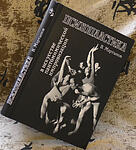

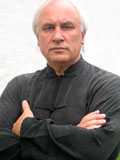 Коан – вопрос к членам Федерации Юн Чун Цюань от президента В.В. Мартынова: «Что Вы сделали для Федерации из того, что не мог бы сделать любой другой за деньги?»
Коан – вопрос к членам Федерации Юн Чун Цюань от президента В.В. Мартынова: «Что Вы сделали для Федерации из того, что не мог бы сделать любой другой за деньги?»